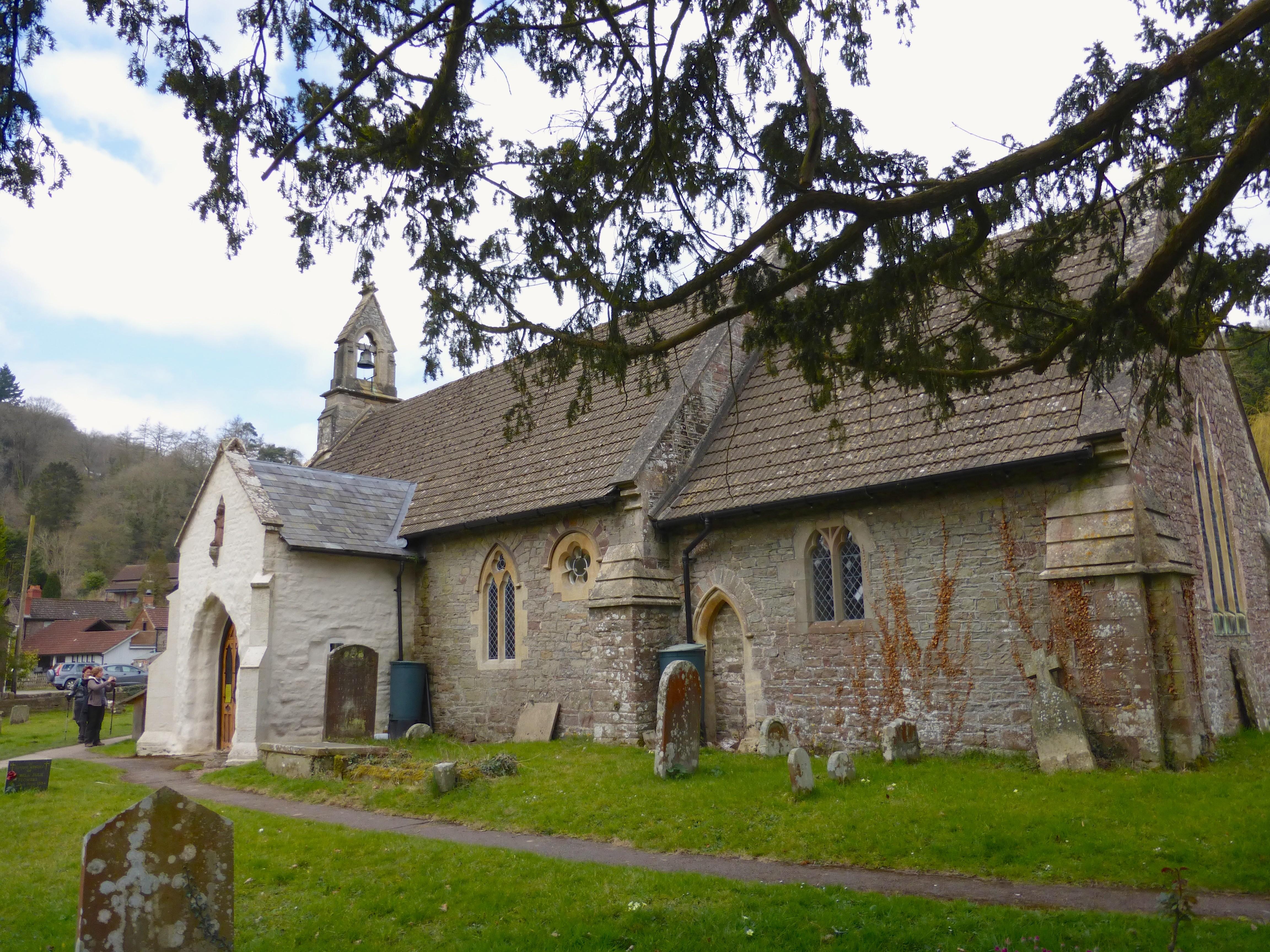Tintern Abbey
Tintern, Monmouthshire
Gothic masterpiece became a Romantic symbol of the sublime.

A small historic church in a beautiful setting on the banks of the River Wye on the border between Wales and England, at the site of an important Roman river crossing.
Tintern, Monmouthshire
The church has an extremely attractive rural setting on the edge of the village of Tintern, sitting comfortably on its site, neither dominating nor dominated by its closest neighbours. The immediate western boundary is adjacent to Fryers Wharf, the site of a Roman crossing point and a historic slipway. The eastern churchyard boundary adjoins a large open field and to the south the boundary is formed by the bank of the River Wye with ancient woodland rising from the far side.
By the year 765AD there was a Celtic Christian church, some 350 years before the foundation of Tintern Abbey, its famous neighbour. A medieval church replaced it and this was eventually rebuilt in 1846, although much medieval detail remains today.
The church and churchyard provide peace and serenity to residents and visitors. In 1839, WH Thomas wrote 'By the churchyard stile, and beneath the dark mantling boughs of the yew, a scene of exquisite sweetness steals upon the eye - the beautiful meadows beyond are skirted by a ridge of lofty woods, with the gentle Wye flowing like a liquid mirror below... the unmolested sheep repose in grateful shade'.
In the aisle is a memorial to Elizabeth Feilding who died in 1703 as well as some older broken tombstones probably brought in from the churchyard during the 1846 restoration. Of these, one is dated 1668, while another has the outline of a two handled broadsword, some five feet long, no doubt commemorating a medieval knight. The churchyard contains several ancient tombstones dating back to 1620. They include those of Samuel Small who died in 1623 and his wife who lie together to the east side of the sanctuary wall. A grand tomb belongs to John Lorraine Baldwin who died in 1855 and was the founder member of the I Zingari Cricket Club and a famous society figure of his day. This is a picture largely unchanged some 175 years on.
The 15th century south porch, which also contains an old tombstone, features a fine groined vaulted roof with Tudor roses and the exterior has a niche which contains a figure of St Michael.
Sir Joseph Bradney in his 1913 History of Monmouthshire lists St Michael’s clergy from 1348. Patronage was in the hands of the Crown until the 17th Century and thereafter passed to the Lords of Tintern Manor, including Willliam Fielding, Thomas Fielding, and John Curre of Itton. The church registers date from 1756 for marriages and 1812 for baptisms and burials.
The sanctuary contains an aumbry and the priest’s doorway into the chancel, sealed up in 1846, can still be seen. The oak chair in the chancel is made from some of the old roof timbers of the medieval church.
From the Visitors Book: 'Beautiful little church, wonderful presence of God', 'Very peaceful', 'A lovely peaceful little church in this beautiful part of the world'.
Tintern, Monmouthshire
Gothic masterpiece became a Romantic symbol of the sublime.
St Arvans, Gwent
Dymock, Gloucestershire
A large medieval church with a well known connection to the Dymock Poets of the First World War.